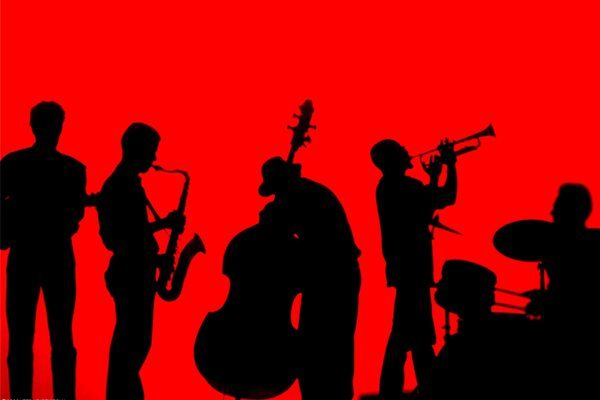The Unexpected Link Between Jazz and Leadership
Table of Contents
I like to say that jazz is a lot like a good glass of wine. Both are layered, complex, and best appreciated over time. They do not reveal their depth immediately. Instead, they evolve with every sip, every note, every pause. This comparison might sound romantic, but it is also practical. Jazz, just like wine, is an experience of constant refinement.
That is exactly what leadership is too.
Great leadership is not static. It moves, flows, and adapts. It listens before responding. It allows space for both structure and spontaneity. I have come to realize that the world of jazz holds a surprising number of insights into how modern leadership can and should evolve, especially in uncertain, rapidly changing environments.
In jazz, there is no single way to play a tune. There is only interpretation. The same is true of leadership. It is not about rigid frameworks or step-by-step guides. It is about responding authentically to what the moment calls for, while staying grounded in shared purpose.
Below are four powerful leadership lessons I have learned from observing and listening to jazz. These ideas can help anyone in a leadership role become more adaptive, more human, and more effective.
1. Master the Art of Unlearning
Jazz musicians often spend years perfecting scales, techniques, and compositions. But when they step into an improvisation set, they let go of that structure. Not because it is irrelevant, but because it is no longer the focus. They trust their foundation and then unlearn what no longer serves the moment.
In leadership, the same principle applies.
Routines can be useful. They help us move through busy days without having to rethink every choice. But when routines become rigid, they prevent learning. They stop us from trying new things, not because those things are risky, but because they are unfamiliar.
Unlearning is one of the hardest skills a leader must cultivate. It requires self-awareness, humility, and the courage to say, “This worked before, but maybe it will not work now.” In my own experience, I have had to unlearn assumptions about team roles, feedback systems, and even my own expectations of what success looks like.
One of the best ways to begin unlearning is by shifting environments. I once hosted an outdoor strategy meeting in a public park. No slides, no conference room. Just conversations. It opened up an entirely new kind of dialogue among team members.
If you want to try this in a structured way, experiential formats like Design Thinking Workshops can help teams step away from autopilot and build new thinking habits.
What you can do:
- Regularly question: “Why do we do it this way?”
- Try rotating meeting formats or change seating arrangements
- Host retrospectives where the only agenda is to challenge assumptions
Unlearning is not forgetting. It is choosing what to carry forward and what to leave behind.
2. Embrace Performing and Experimenting at the Same Time
Jazz musicians do something remarkable. They perform and experiment at the same time. While playing in front of an audience, they try something new, take risks, and sometimes hit a few wrong notes. But the beauty lies in how they respond. They do not stop. They adapt. They find a new rhythm.
In most workplaces, however, experimentation is often separated from delivery. Leaders feel they need to have all the answers before presenting a solution. Employees are encouraged to innovate, but only in isolated “innovation projects,” not in daily workflows.
This is a missed opportunity.
True innovation happens when people are encouraged to explore within the act of doing. When mistakes are seen as feedback, not failure. And when leaders create psychological safety for their teams to learn publicly.
One team I worked with adopted this mindset by launching “open mic” Fridays. Each week, a different person presented a small idea, experiment, or failure. Over time, it changed how the team approached feedback. They became less defensive, more open, and a lot more creative.
This mirrors the jazz mindset of embracing the mess, knowing that something beautiful can emerge from it.
Try this with your team:
- Create space for “learning in public,” not just behind closed doors
- Model vulnerability by sharing your own learning moments
- Replace “What went wrong?” with “What did we discover?”
For leaders interested in building this mindset systematically, programs like Driving Innovation can provide hands-on frameworks to embed experimentation into daily work.
In jazz and in leadership, it is not about perfection. It is about presence and progression.
3. Jamming and Hanging Out: Learning by Doing and Talking
Ask any jazz musician about their growth and you will hear about “jamming.” These are informal sessions where musicians come together, not to rehearse, but to play. There is no rigid agenda, just an invitation to create, connect, and learn from each other.
In organizational life, we often undervalue these spaces. We plan for meetings, track agendas, and set goals. But we forget to design time for conversations that are unstructured, creative, and cross-pollinating.
Some of the most innovative teams I have seen treat informal connection as serious business. They set up cross-departmental coffee chats, rotate lunch partners, and create working circles that bring together people from different functions.
Why? Because ideas rarely travel on slides. They travel in stories, jokes, and shared moments.
At one offsite I attended, the most valuable session was not the keynote. It was a spontaneous brainstorming circle that happened around a campfire. That night, three different departments co-created a pilot project that ended up improving service delivery by 20 percent.
If you want to introduce this energy into your teams, team bonding experiences can help create shared context, deepen trust, and spark organic collaboration.
Try this:
- Dedicate one meeting a month with no agenda, just open dialogue
- Encourage team members to shadow peers from other teams
- Host “What are you working on?” sessions where anyone can share updates
Jamming is not a waste of time. It is the soil in which innovation grows.
4. Taking Turns Soloing and Supporting
In jazz, soloing is not just about playing louder. It is about carrying the story for a while, with others supporting quietly in the background. Then, roles switch. The soloist steps back, and someone else takes the lead. There is grace in both roles.
This is a lesson every leader should internalize.
Leadership is not a spotlight. It is a dance. There will be moments when you need to speak, decide, and act. But there will also be times when your job is to listen, observe, and support.
One of the hardest transitions for many new leaders is learning how to lead from behind. To allow others to step up. To resist the urge to direct every conversation. But the reward is worth it. Teams that feel trusted tend to take more initiative and build deeper accountability.
Michael Hyatt once said, “If you want to be a great leader, you must first become a great follower.” I could not agree more.
Supporting your team is not passive. It is one of the most powerful forms of leadership.
Build this rhythm:
- Notice who speaks the most in meetings and consciously make space for others
- Ask team members to lead projects, not just execute them
- Acknowledge followers publicly and emphasize their value
In jazz and in life, leading well means knowing when to take the solo and when to hold the rhythm for others.
Final Thoughts: Say Yes to the Mess
The beauty of jazz lies in its messiness. It teaches us that control is not always the goal. Sometimes, it is about embracing flow, trusting your collaborators, and responding to the moment with creativity and heart.
Leadership is no different.
The world does not need more rigid frameworks. It needs more human leaders. People who can listen, adapt, and move in sync with their teams. People who see mistakes as invitations, and conversations as opportunities.
So the next time you are feeling uncertain, imagine yourself in a jazz band. What would you do if you were not afraid of hitting the wrong note? What would happen if you gave someone else the solo? What might emerge if you just said yes to the mess?
The answers might surprise you. And they might make you a better leader.
Want to dive deeper? I recommend the book that inspired this post: Yes to the Mess by Frank J. Barrett. It is a brilliant blend of management wisdom and musical metaphor.










